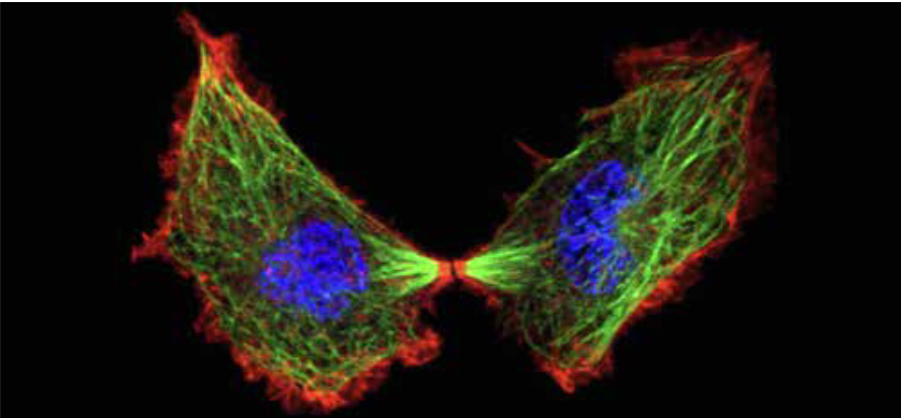Projects
The research projects conducted by the CBIO have marked advances in bioinformatics, artificial intelligence applied to health, and computational biology.
These projects, often interdisciplinary and collaborative, have led to major results, international publications, and tools that are now used in the scientific community.

Current research projects
The CBIO is conducting several major projects funded by national and European institutions, often in partnership with other research centers or clinical stakeholders.
ANR – STEVE
Study of transposable elements and their epigenetic variation in the genotype-phenotype relationship. This project, in partnership with biologists from ENS – PSL, explores the impact of these elements on complex traits, with applications in human health and agriculture.
Carnot M.I.N.E.S.
Development of a non-invasive tool for early diagnosis of lung cancer, in collaboration with the University of Cambridge. The project is based on the analysis of biomedical images and transcriptomic data using statistical methods and machine learning.
PRTK – SELECT
Predictive modeling of survival in patients with muscle-invasive bladder cancer treated with neoadjuvant chemotherapy. The project aims to improve patient stratification based on pathological slides.
CBIO projects
The CBIO’s previous work has resulted in major publications and methodological innovations in bioinformatics, health, and computational biology:
Komet – Large-scale prediction of drug-target interactions
- Objective: Develop an algorithm capable of predicting interactions between molecules and therapeutic targets from a massive dataset (LCIdb).
- Partners: CBIO, Institut Curie
- Publication: J. Chem. Inf. Model, 2024
ComSeg – Analysis of complex tissues using spatial transcriptomics
- Objective: Develop a cell segmentation method adapted to the spatial distribution of RNA transcripts in tissues.
- Partners: CBIO, Institut Curie, space biology research teams
- Publication: Communications Biology, 2024
Evolutionary modeling of bacterial genomes
- Objective: Reconstruct the evolutionary history of bacterial genomes by integrating mutations and horizontal transfers.
- Partners: CBIO, evolutionary genomics teams
- Publication: PNAS, 2024
Detection of homologous recombination deficiency (HRD)
- Objective: Use deep learning methods to detect homologous recombination deficiency in breast cancer from histological images.
- Partners: CBIO, Institut Curie, Centre Léon Bérard
- Publication: Cell Reports Medicine, 2022
Projects by theme:
New therapeutic approaches and personalized medicine
- New drugs for cystic fibrosis based on machine learning
- Fondation Maladies Rares, 2020–2021
- Use of machine learning models to identify active compounds against cystic fibrosis.
- Machine learning for genome-wide association studies (GWAS)
- Collaboration with SANOFI, 2016–2019
- Development of algorithms to detect genome-phenotype associations in human cohorts.
- MLPM – Machine Learning for Personalized Medicine
- EC-FP7, 2012–2016
- Doctoral training network on AI for precision medicine.
- AP’ONCALYPSE
- ANR, 2012–2013
- Validation of an immune signature predictive of response to anthracyclines in breast cancer.
- TYRO3
- INCA, 2012–2014
- Targeting the TYRO3 protein as a new therapeutic avenue against cancer.
Omic and bioinformatics analysis of big data
- Hi-FISH
- ANR, 2014–2018
- Systematic study of gene expression at the RNA molecule level using in situ hybridization.
- ABS4NGS
- ANR – Investments for the Future, 2012–2016
- Algorithms and software for high-throughput sequencing.
- RADIANT
- EC-FP7, 2012–2015
- Rapid development and dissemination of statistical tools for high-throughput sequencing.
- Integrated analysis of methylation profiles in breast cancer
- League Against Cancer, 2011–2014
- Structured machine learning for microbiology
- Collaboration with BioMérieux, 2011–2014
- Structured learning applied to mass spectrometry and sequencing.
Regulatory networks and development
- CRESTNETMETABO
- ANR, 2015–2019
- Study of regulatory networks in neural crest cell development.
- CRESTNET
- ANR, 2012–2014
- Integrative approaches to modeling regulatory networks in neural crest induction.
- CLARA
- ANR, 2009–2013
- High-dimensional clustering algorithms.
Imaging, microscopy, and diagnostics
- RAMIS
- 2007–2011
- High-resolution microscopes for screening anti-cancer molecules.
- ParTox
- ANR, 2007–2009
- Monitoring the toxicity of nanoparticles.
- NADINE
- EC-FP7, 2010–2015
- Nanosystems for the early diagnosis of neurodegenerative diseases.
- Indigo
- EC-FP7, 2005–2008
- High-sensitivity fluorescent biosensors for diagnostic applications.
European networks and collaborative infrastructures
- Systems Microscopy Network of Excellence
- EC-FP7, 2013–2015
- ESBIC-D – European Systems Biology Infrastructure for Complex Diseases
- EC-FP7, 2005–2007
Statistical methods and machine learning
- SMAC – Statistical Machine Learning for Complex Biological Data
- ERC, 2012–2017
- Algorithms for complex biological data.
- MGA – Graphical models and applications
- ANR, 2007–2011
- Sakura
- JSPS, 2003–2005
- Statistical analysis and combinatorics of biological networks.
- Inference and learning in dynamic graphical models
- France-Berkeley Fund, 2007–2009
- Applications to bioinformatics and speech recognition.
- BioClassif
- CNRS, 2004–2006
- Statistical learning theory for structured data.
- Statistical learning for the analysis of transcriptome
- CNRS, 2003–2004
Bioinformatics tools and infrastructure
- iBioinfo
- CEA, 2005–2006
- Bioinformatics methods and tools for DNA chip analysis.
- Kernelchip
- CNRS, 2004–2007
- Integration of expression data and regulatory networks.
- GemBio
- Mines Paris, 2004–2007
- Analysis of the effects of antimalarial drugs on Plasmodium falciparum.
- Development of databases in oncology
- JSPS, 2008–2010
Scientific impact
These projects have led to:
- publications in leading international journals,
- the creation of open source software and tools,
- the transfer of methodologies to industrial and hospital partners,
- the training of young researchers at the interface between data science and biology.


